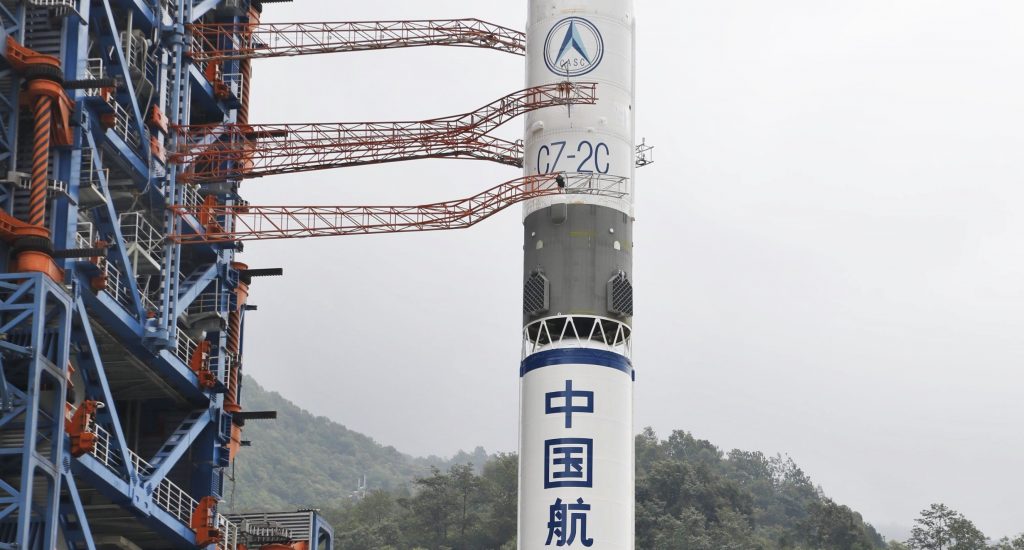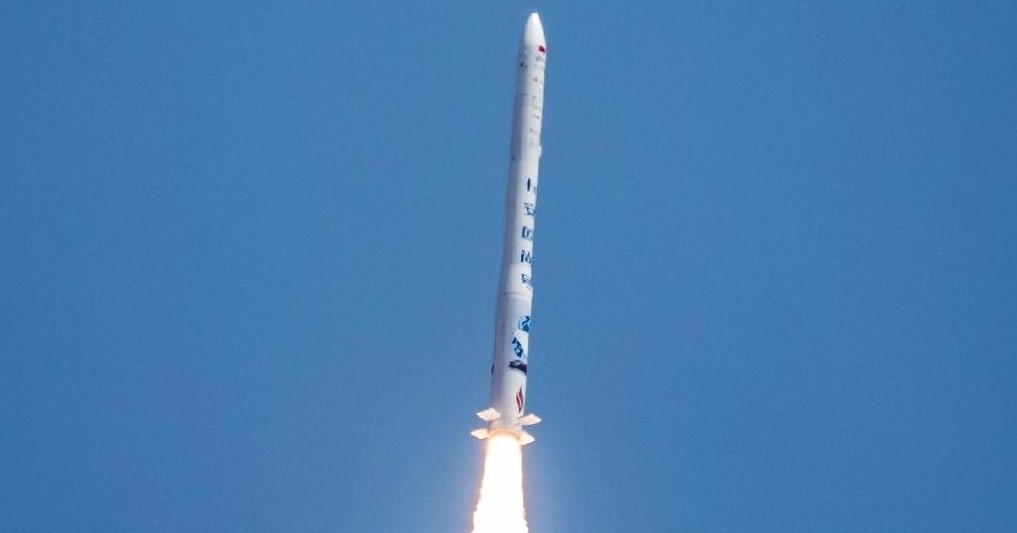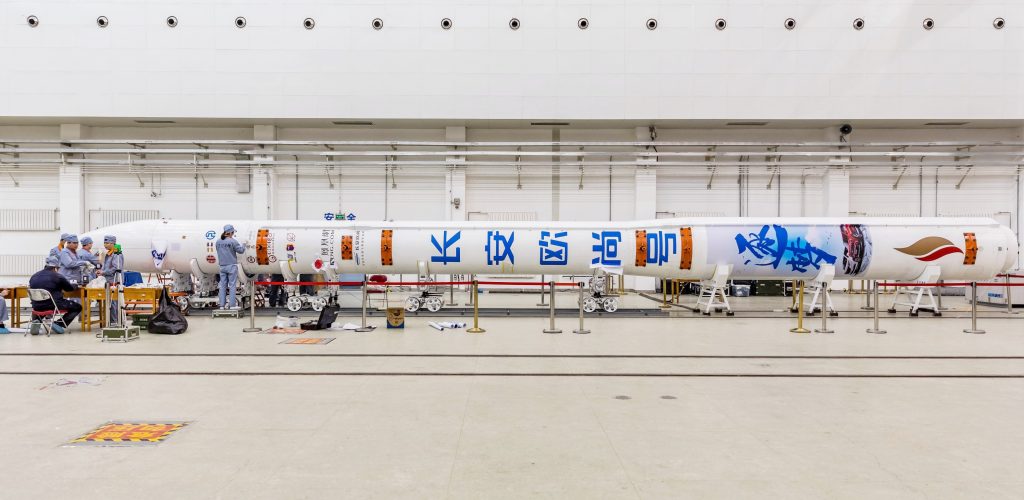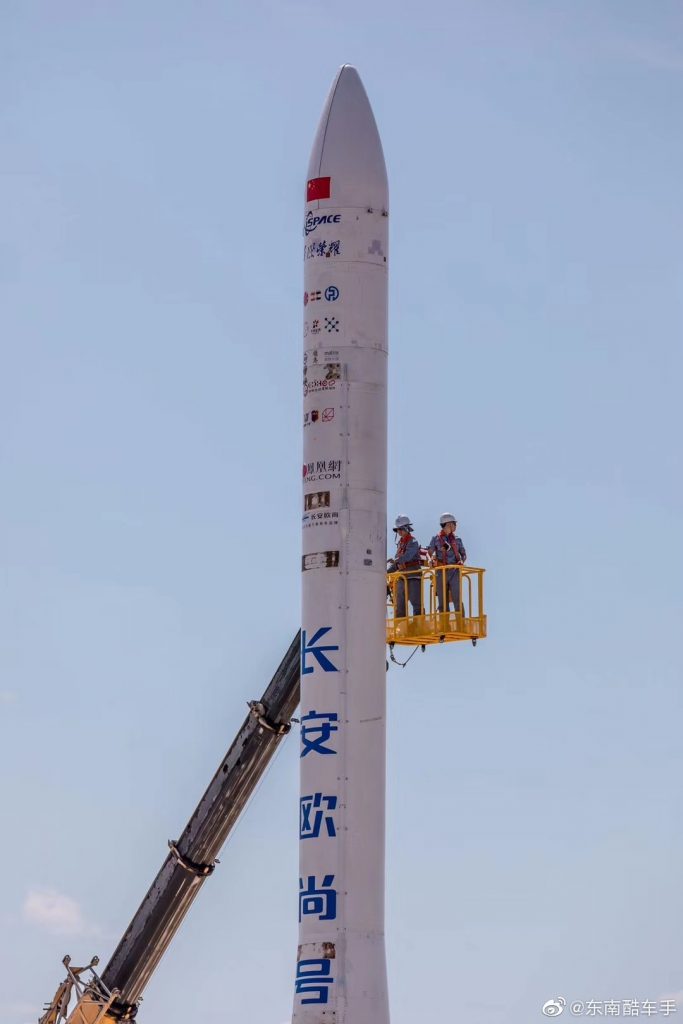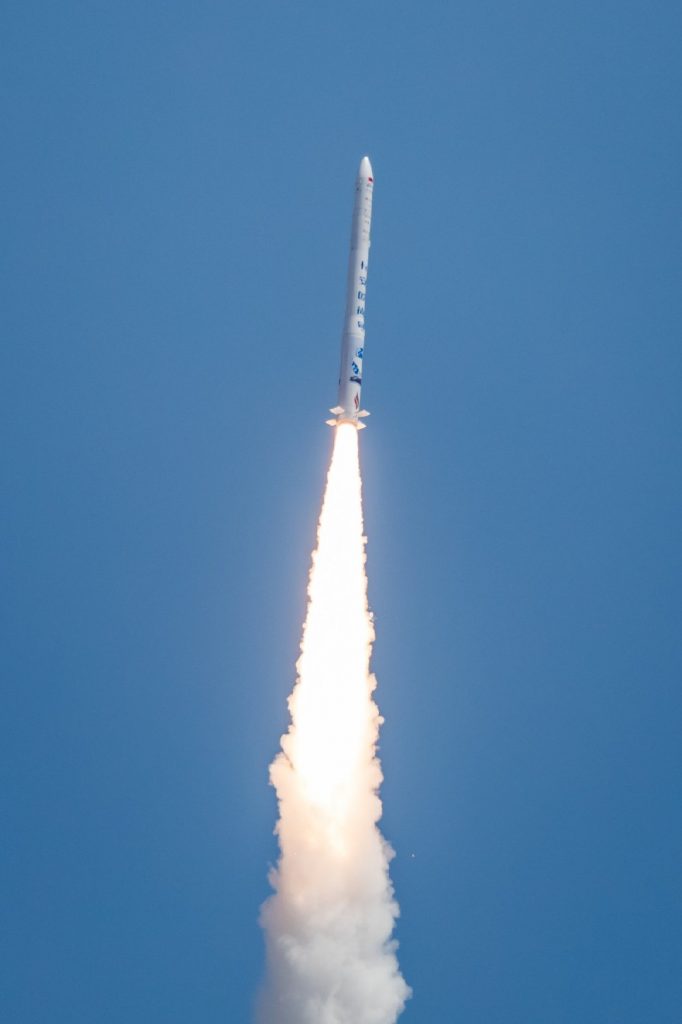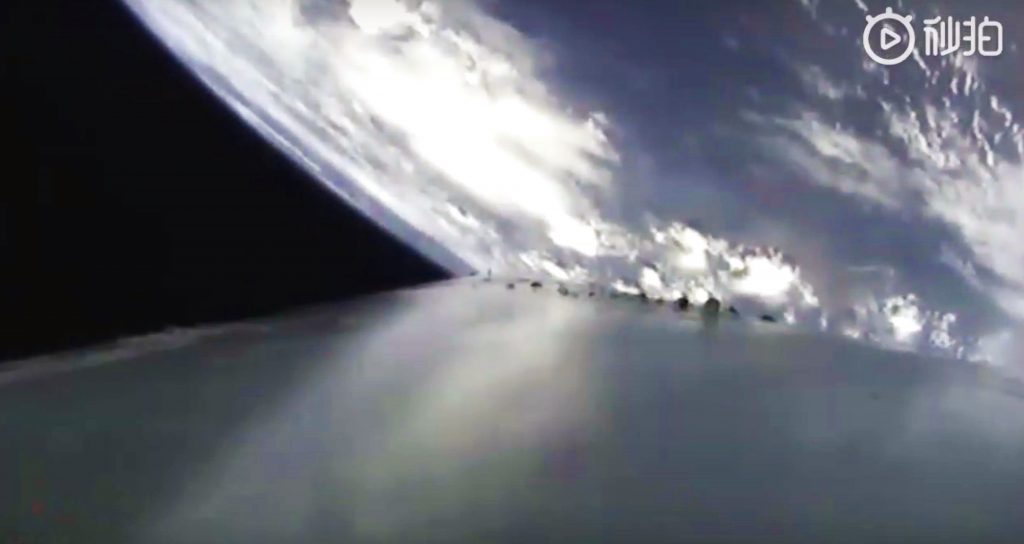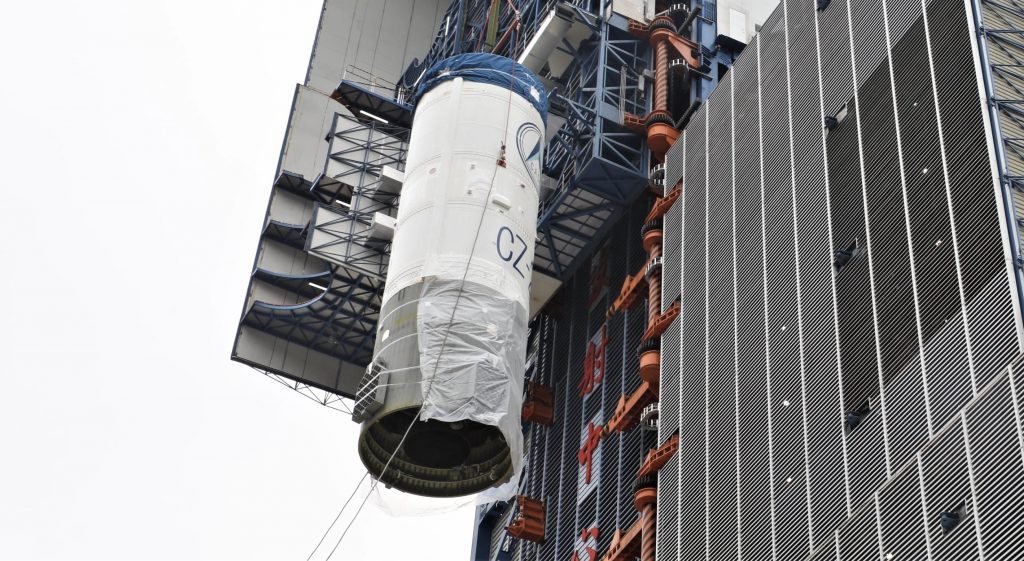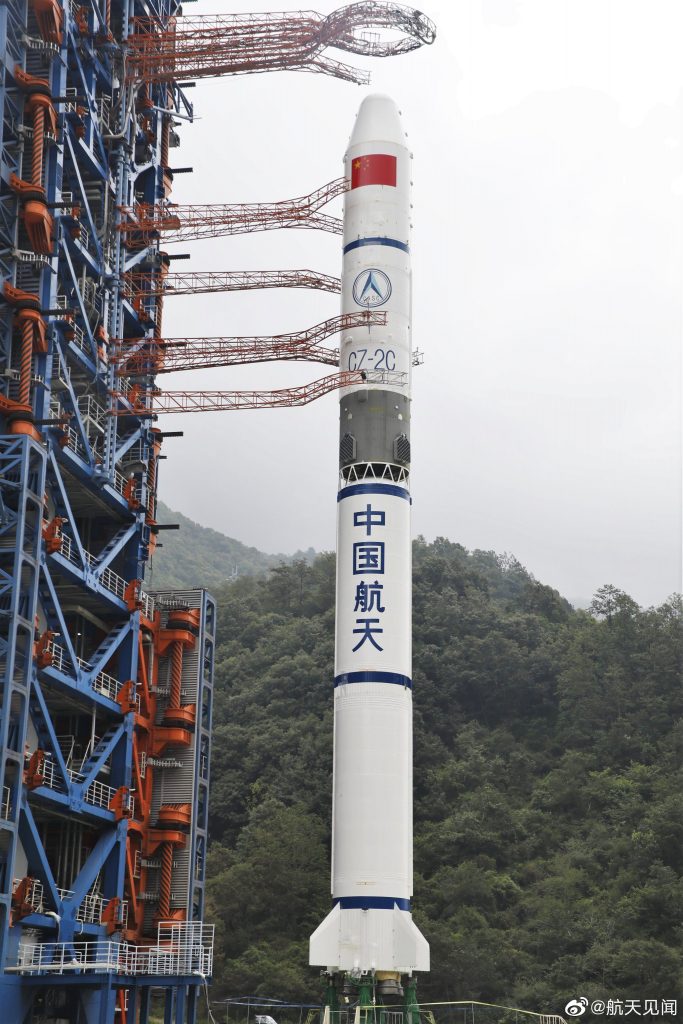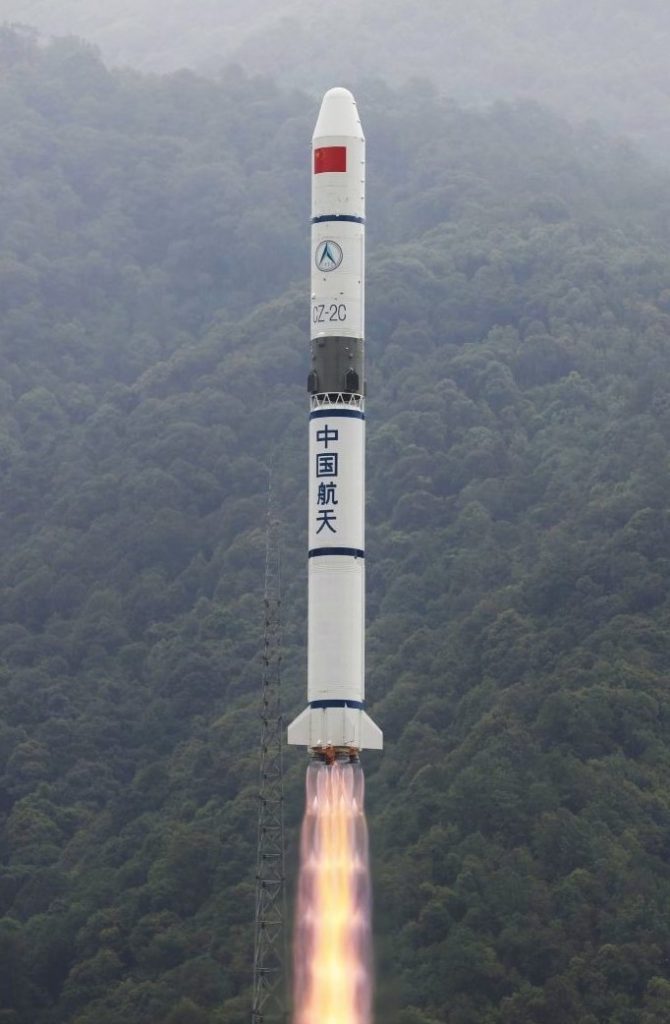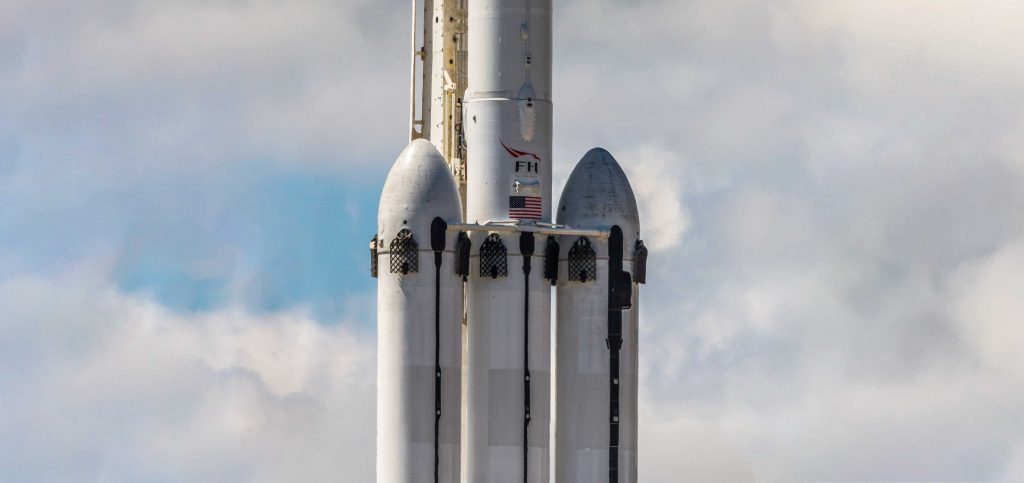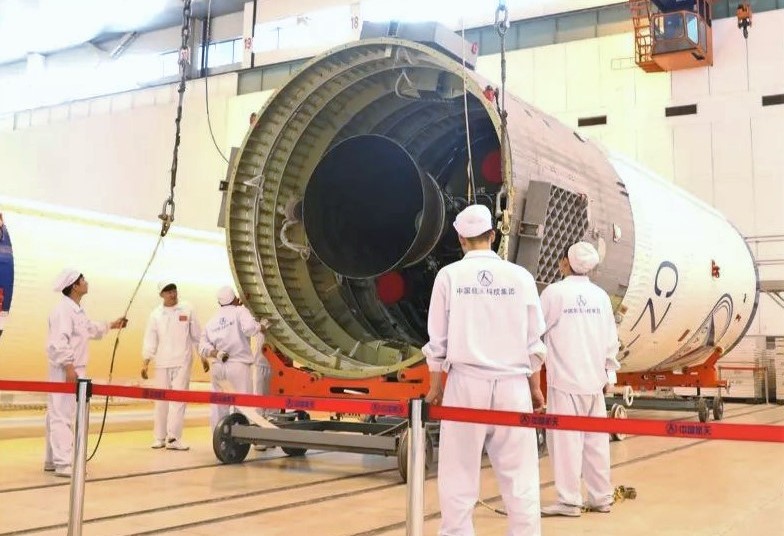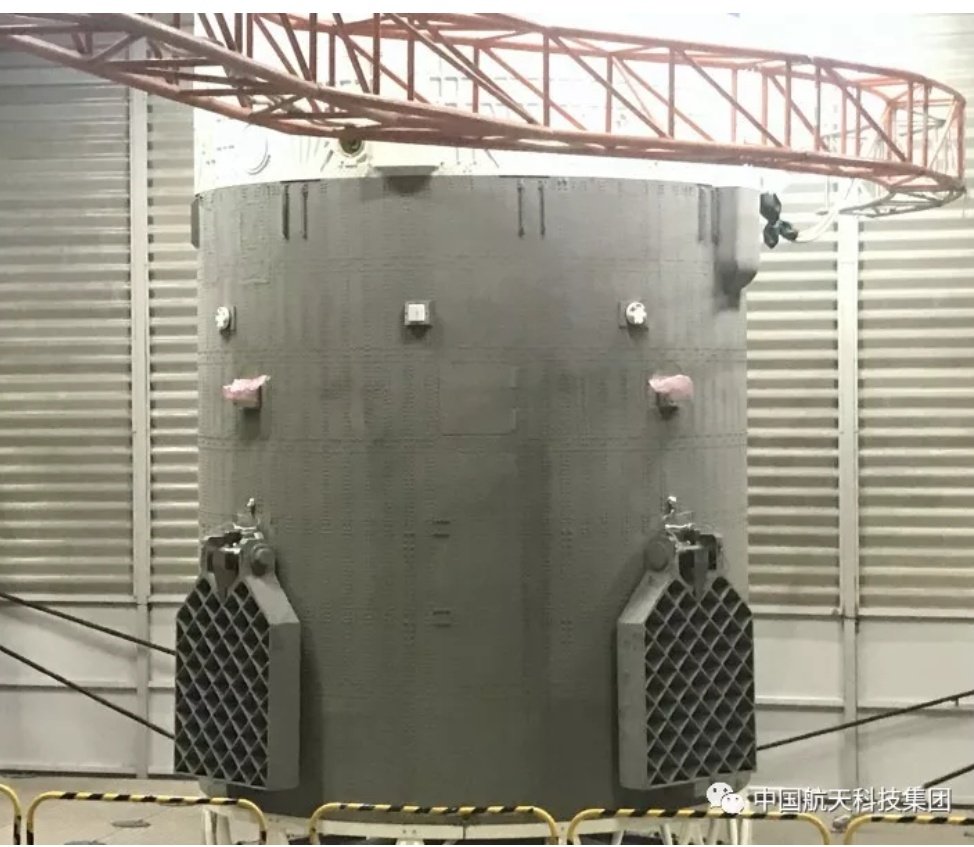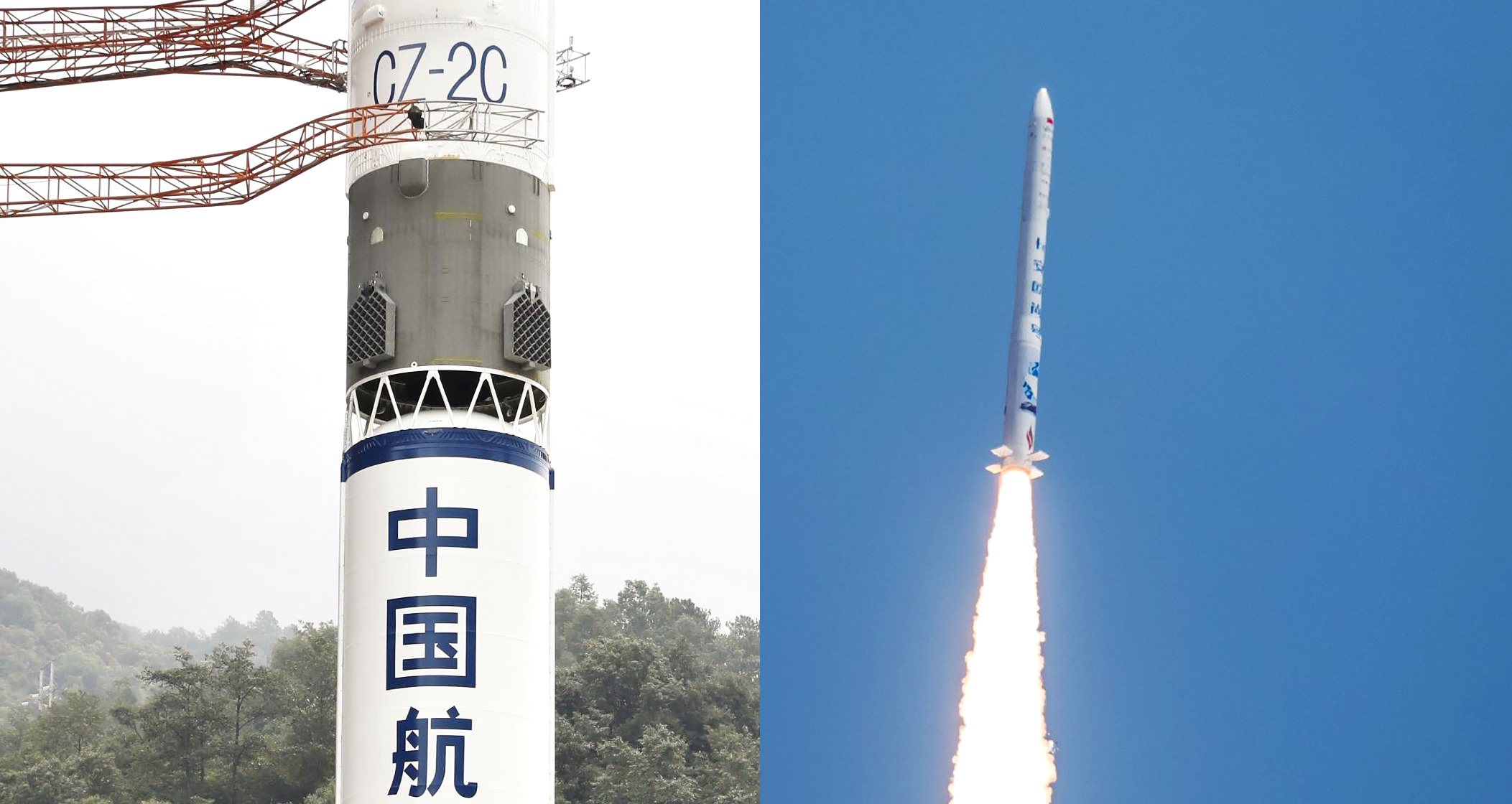
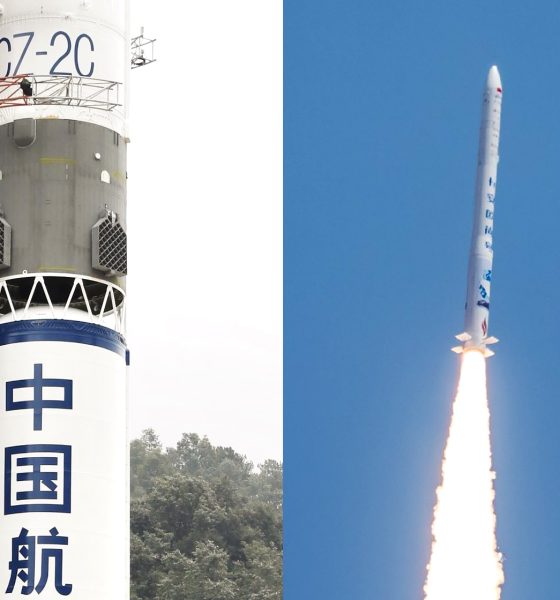
News
DeepSpace: China tests SpaceX-reminiscent grid fins after iSpace snags orbital milestone
Eric Ralph · August 1st, 2019
Welcome to the latest edition of DeepSpace! Each week, Teslarati space reporter Eric Ralph hand-crafts this newsletter to give you a breakdown of what’s happening in the space industry and what you need to know.
Although the accomplishments aren’t quite as flashy as a launch to the Moon, the last week has featured a number of interesting developments and significant milestones from both the state-run and quasi-commercial wings of Chinese spaceflight.
In the commercial realm, Chinese startup iSpace became the country’s first commercial entity to successfully reach orbit, achieving the feat with a three-stage solid rocket called Hyperbola 1.
One day later, state-owned Chinese company China Aerospace Science and Technology Corporation (CASC) completed its 50th successful Long March 2 rocket launch on a relatively routine government spy satellite mission. Unique was the fact that the rocket marked the first flight test of grid fins – extremely similar to those used on SpaceX’s Falcon 9 – on a Long March rocket.
The march to orbit
- In 2019 alone, three Chinese spaceflight startups have made their first orbital launch attempts and more tries are planned in the second half of the year. OneSpace and LandSpace both got close but ended up suffering partial failures that cut their attempts short before safely reaching orbit.
- Enter iSpace: one of dozens of startups in a burgeoning Chinese commercial spaceflight industry, the company’s three-stage solid rocket – named Hyperbola 1 – became the first Chinese startup-launched rocket to successfully reach orbit on July 25th.
- Although a large amount of the hardware may well have been procured (or licensed) wholesale from CASC, the success still signifies the start of a new alternative to government launches for companies (and perhaps government agencies) seeking to launch smaller satellites.
- Hyperbola 1 stands about 21m (68 ft) tall, is 1.4m (4.6 ft) in diameter at its widest point, and weighs about 31 tons (68,000 lb) when fully fueled. Three solid rocket stages are followed by an extremely small fourth stage meant to circularize the payload(s) in low Earth orbit (LEO).
- The rocket is capable of launching as much as 260 kg (570 lb) to a 500 km (310 mi) sun-synchronous orbit (SSO).
- For iSpace, Hyperbola 1 is more of a stopgap measure as the company works to develop Hyperbola 2, a significantly larger launch vehicle meant to feature a reusable booster and internally-developed liquid rocket engines.
- Ultimately, Hyperbola 1 reaching orbit is an exciting milestone, but it will be far more significant when a Chinese startup reaches orbit with a launch vehicle it has truly designed and built itself. A number of companies aim to do just that next year (2020).
The sincerest form of flattery…
- A day later (July 26th) and approximately 1000 miles (1600 km) to the southeast, state-run corporation CASC was preparing for a routine launch of its Long March 2C rocket, carrying a trio of relatively small spacecraft for a government spy satellite constellation.
- Technically known as YW-30 Group-5, the launch was a routine success that just so happened to be the Long March 2 family’s 50th successful launch in more than 35 years. The family has only suffered one in-flight failure.
- Long March 2C is a two-stage rocket that stands 42m (138 ft) tall (shorter than Falcon 9’s first stage), 3.35m (11 ft) wide, and weighs ~233 tons (514,000 lb) fully fueled. The 2C variant is capable of launching ~3850 kg (8500 lb) into LEO and more than 1250 kg (2750 lb) into geostationary transfer orbit (GTO).
- Although the rocket’s 50th launch success milestone is worth recognizing, this particular launch wound up drawing a significantly greater amount of attention for an entirely different reason: attached to the outside of the Long March 2C’s booster interstage was a quartet of immediately familiar grid fins.
- SpaceX has grown famous in the last five or so years for its spectacularly successful Falcon 9 recovery and reusability, aided in no small part by grid fins used by the booster to retain aerodynamic control authority during its hypersonic jaunts through the atmosphere.
- The appearance of grid fins on a Chinese rocket – looking undeniably similar to SpaceX’s first-generation aluminum fins – raised some (moderately xenophobic) ire in the space community, with people falling back on the stereotype of the perceived willingness of Chinese people to flagrantly ‘copy’ ideas.
- Both the stereotype and the grid fin-stoked ire are arguably undeserved. SpaceX did not invent grid fins, nor did it invent the concept of using grid fins to guide suborbital projectiles.
- In fact, CEO Elon Musk would almost certainly be happy to see someone – anyone! – blatantly copy SpaceX’s approach to reusability. A blatant copy, while not exactly worthy of pride, is still a major improvement over companies sticking their heads in the sand and tacitly choosing insolvency and commercial irrelevance rather than admit that they were wrong and SpaceX was right.
- (Pauline Acalin – Teslarati)
- According to CASC, this mission’s grid fins were included to flight-test their ability to more carefully guide the booster’s return to Earth. China infamously takes a… lax… approach to range safety, allowing spent boosters and fairings to haphazardly crash into inhabited areas, often containing remnants of their sometimes toxic propellant.
- Indeed, this particular booster did appear to crash in an uninhabited valley, be it thanks to those experimental grid fins or pure chance
- However, aside from not crashing large objects in populated areas, CASC and China have plans to develop a Long March 6 rocket with a reusable booster that will use the same recovery methods as Falcon 9. That rocket could fly as early as 2021 and July 26th’s grid fin test is an obvious sign that work is ongoing.
- If China manages to develop and launch a partially reusable rocket by 2021, they will be miles (and years) ahead of its space agency peers (NASA, ESA, CNES) and companies like ULA and Arianespace.
Thanks for being a Teslarati Reader! Stay tuned for next week’s issue of DeepSpace.
– Eric

News
SpaceX reportedly mulling IPO, eyeing largest of all time: report
“I do want to try to figure out some way for Tesla shareholders to participate in SpaceX. I’ve been giving a lot of thought to how to give people access to SpaceX stock,” Musk said.

SpaceX is reportedly mulling an initial public offering, eyeing what would be the largest valuation at the time of availability of all time, a new report from Bloomberg said on Tuesday.
It is one of many reports involving one of Elon Musk’s companies and a massive market move, as this is not the first time we have seen reports of an IPO by SpaceX. Musk himself has also dispelled other reports in the past of a similar nature, including an xAI funding round.
SpaceX and Musk have yet to comment on the report. In the past, untrue reports were promptly replied to by the CEO; this has not yet gained any response, which is a good sign in terms of credibility.
Musk has discussed a potential IPO for SpaceX in recent months, as the November 6 shareholder meeting, as he commented on the “downsides” of having a public company, like litigation exposure, quarterly reporting pressures, and other inconveniences.
Nevertheless, Musk has also said he wants there to be a way for Tesla shareholders to get in on the action. At the meeting in early November, he said:
“I do want to try to figure out some way for Tesla shareholders to participate in SpaceX. I’ve been giving a lot of thought to how to give people access to SpaceX stock.”
Additionally, he added:
“Maybe at some point., SpaceX should become a public company despite all the downsides of being public.”
Musk has been historically reluctant to take SpaceX public, at times stating it could become a barrier to colonizing Mars. That does not mean it will not happen.
Bloomberg’s report cites multiple unidentified sources who are familiar with the matter. They indicate to the publication that SpaceX wants to go public in mid-to-late 2026, and it wants to raise $30 billion at a valuation of around $1.5 trillion.
This is not the first time SpaceX has discussed an IPO; we reported on it nine years ago. We hope it is true, as the community has spoken for a long time about having access to SpaceX stock. Legendary investor Ron Baron is one of the lucky few to be a SpaceX investor, and said it, along with Tesla, is a “lifetime investment.”
Tesla bull Ron Baron reveals $100M SpaceX investment, sees 3-5x return on TSLA
The primary driver of SpaceX’s value is Starlink, the company’s satellite internet service. Starlink contributes 60-70 percent of SpaceX’s revenue, meaning it is the primary value engine. Launch services, like Falcon 9 contracts, and the development of Starship, also play supporting roles.
News
SpaceX reaches incredible milestone with Starlink program
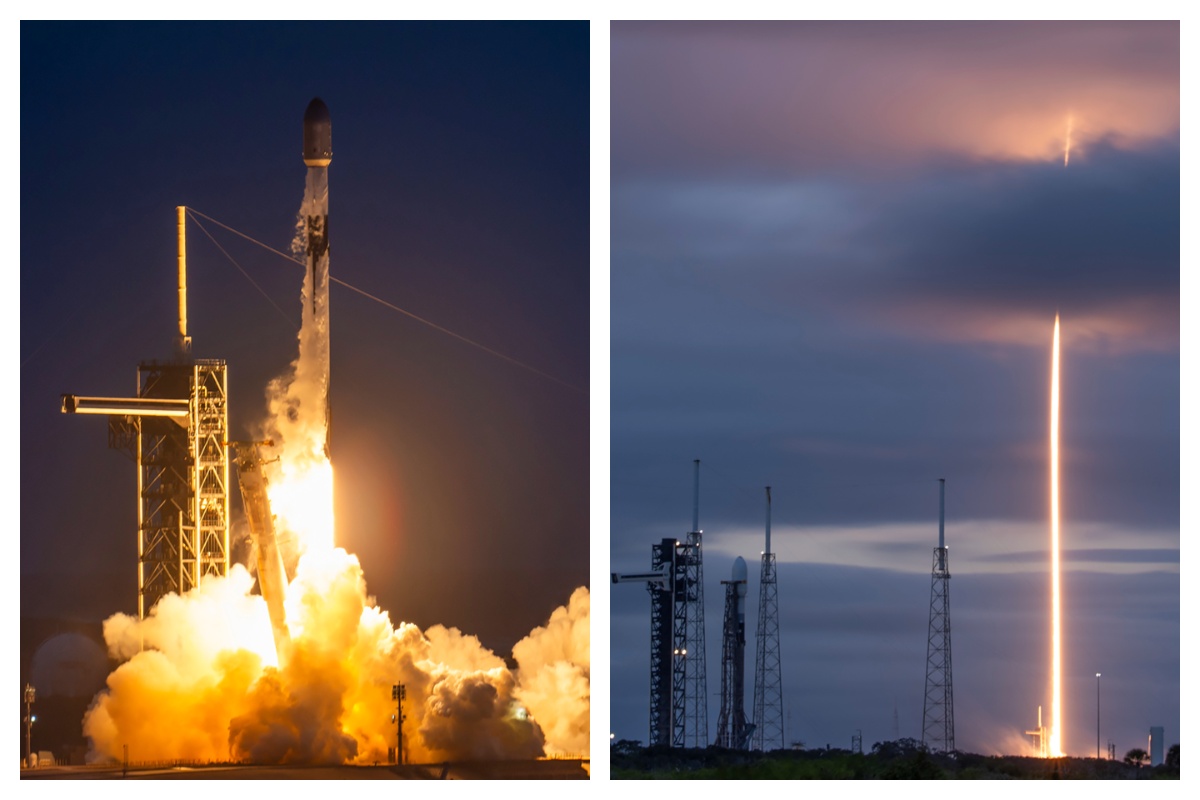
SpaceX reached an incredible milestone with its Starlink program with a launch last night, as the 3,000th satellite of the year was launched into low Earth orbit.
On Monday, SpaceX also achieved its 32nd flight with a single Falcon 9 rocket from NASA’s Kennedy Space Center.
The mission was Starlink 6-92, and it utilized the Falcon 9 B1067 for the 32nd time this year, the most-used Falcon booster. The flight delivered SpaceX’s 3000th Starlink satellite of the year, a massive achievement.
There were 29 Starlink satellites launched and deployed into LEO during this particular mission:
Falcon 9 launches 29 @Starlink satellites from Florida pic.twitter.com/utKrXjHzPN
— SpaceX (@SpaceX) December 9, 2025
SpaceX has a current goal of certifying its Falcon boosters for 40 missions apiece, according to Spaceflight Now.
The flight was the 350th orbital launch from the nearby SLC-40, and the 3,000 satellites that have been successfully launched this year continue to contribute to the company’s goal of having 12,000 satellites contributing to global internet coverage.
There are over five million users of Starlink, the latest data shows.
Following the launch and stage separation, the Falcon 9 booster completed its mission with a perfect landing on the ‘Just Read the Instructions’ droneship.
The mission was the 575th overall Falcon 9 launch, highlighting SpaceX’s operational tempo, which continues to be accelerated. The company averages two missions per week, and underscores CEO Elon Musk’s vision of a multi-planetary future, where reliable connectivity is crucial for remote work, education, and emergency response.
As Starlink expands and works toward that elusive and crucial 12,000 satellite goal, missions like 6-92 pave the way for innovations in telecommunications and enable more internet access to people across the globe.
With regulatory approvals in over 100 countries and millions of current subscribers, SpaceX continues to democratize space, proving that reusability is not just feasible, but it’s also revolutionary.
News
Tesla expands new Full Self-Driving program in Europe
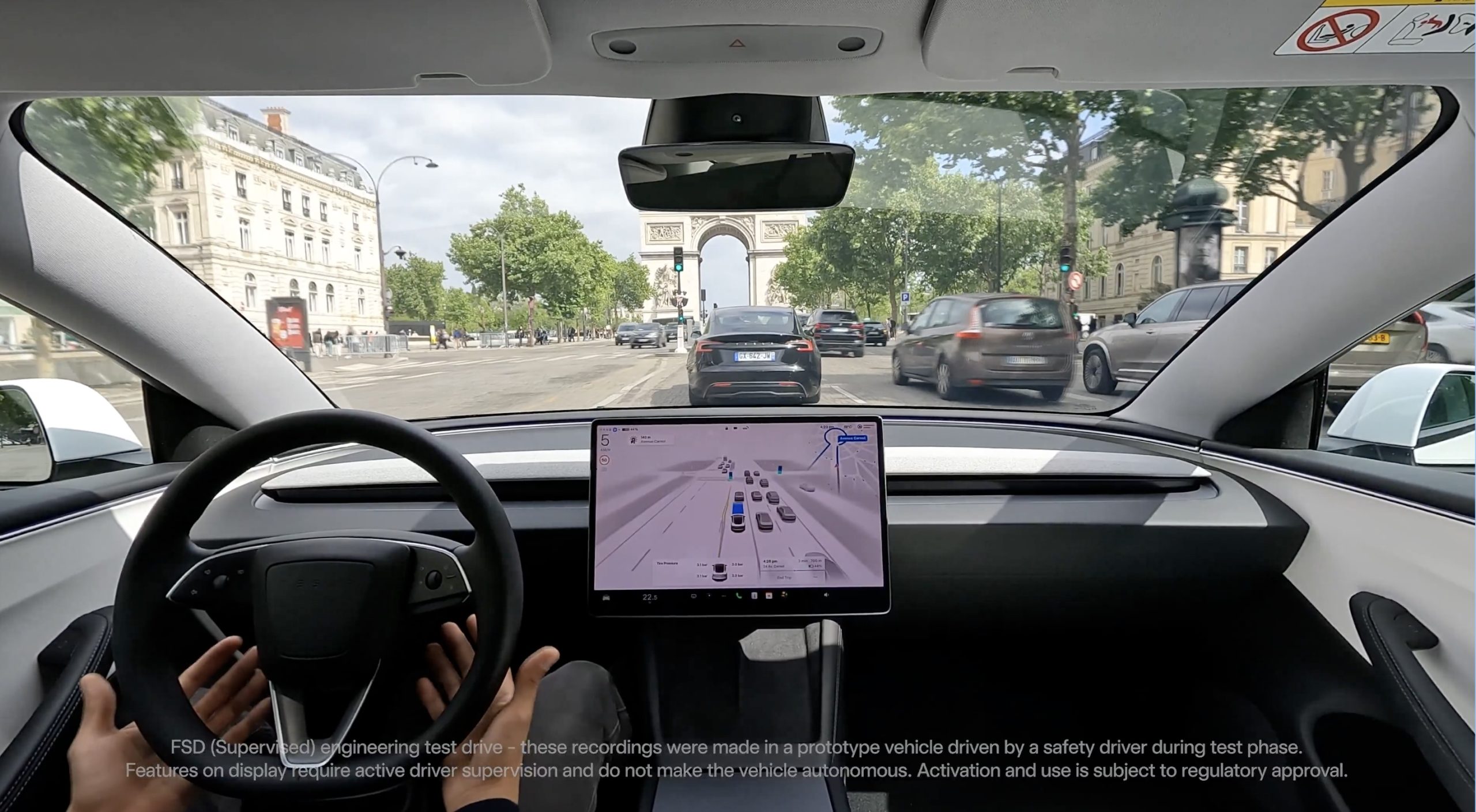
Tesla expanded its new Full Self-Driving program, which gives people the opportunity to experience the company’s suite, in Europe.
Tesla recently launched an opportunity for Europeans to experience Full Self-Driving, not in their personal vehicles, but through a new ride-along program that initially launched in Italy, France, and Germany back in late November.
People could experience it by booking a reservation with a local Tesla showroom, but timeslots quickly filled up, making it difficult to keep up with demand. Tesla expanded the program and offered some additional times, but it also had its sights set on getting the program out to new markets.
It finally achieved that on December 9, as it launched rides in Denmark and Switzerland, adding the fourth and fifth countries to the program.
Tesla confirmed the arrival of the program to Denmark and Switzerland on X:
Now available in Denmark & Switzerland
🇩🇰 https://t.co/IpCSwHO566 https://t.co/V2N5EarLNX
— Tesla Europe & Middle East (@teslaeurope) December 9, 2025
The program, while a major contributor to Tesla’s butts in seats strategy, is truly another way for the company to leverage its fans in an effort to work through the regulatory hurdles it is facing in Europe.
Tesla has faced significant red tape in the region, and although it has tested the FSD suite and been able to launch this ride-along program, it is still having some tremendous issues convincing regulatory agencies to allow it to give it to customers.
CEO Elon Musk has worked with regulators, but admitted the process has been “insanely painful.”
The most recent development with FSD and its potential use in Europe dealt with the Dutch approval authority, known as the RDW.
Tesla says Europe could finally get FSD in 2026, and Dutch regulator RDW is key
Tesla said it believes some regulations are “outdated and rules-based,” which makes the suite ineligible for use in the European jurisdiction.
The RDW is working with Tesla to gain approval sometime early next year, but there are no guarantees. However, Tesla’s angle with the ride-along program seems to be that if it can push consumers to experience it and have a positive time, it should be easier for it to gain its footing across Europe with regulatory agencies.
